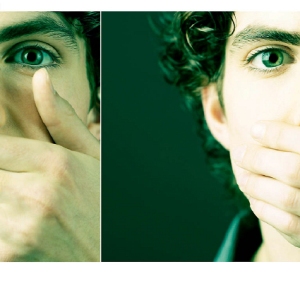High-intensity moments are when many people show their true colors, and that can be just as true for characters. Action scenes can be great opportunities to delve more deeply into your characters’ motivations, fears, and limitations.
Use action scenes as opportunities to explore your characters on a new level.
Reactions and Decisions
Why does he or she fight, flee or freeze? Why does a character make certain choices in the heat of the moment of an action scene and what is the source of that action or decision? These questions can help you as the writer better understand a character’s motivations, which will then help you better communicate that to the reader. These questions can also help you assess if you are writing the character in a truly representative way and not forcing the story in a certain direction.
Are the characters making conscious decisions that may hinder them from reaching their goal? Is a decision made to benefit or hurt someone else or that individual character? How do those choices reinforce who a character is?
Snap reactions say a lot about a person’s psyche. Make sure gut reactions match the character and their goals. Did writing a particular reaction ring true with you as the writer, or was it a planned reaction that may or may not match the character now that you know him or her a little better? Characters change and grow over the process of writing. Something you planned at the beginning of the project may no longer work as well as expected.
Consequences
Consider how a character’s actions and choices impacts his or her internal and external goals. People often makes decisions that are not well thought out or don’t have the desired or intended results. Characters shouldn’t be any different. Understanding why a character does something, whether something that develops spontaneously while writing or planned actions and decisions, will help you write more realistic characters.
Ask whether a character is fighting for or against something. How the character sees a situation can greatly affect how he or she responds to it. Characters who are constantly fighting against something may have a more pessimistic worldview or be more wary of positive changes, while a character fighting for something may see things more optimistically or trust more easily.
A character who has never had things come easily or expected failure may self-sabotage or miss good opportunities that can delay or prevent her from reaching his goals. A character who always sees the best in people and occurrences may unwittingly get involved in something he shouldn’t have or trust someone to easily and end up betrayed or hurt.
Action scenes are often the culmination of consequences. How a character acts and responds in a high-stress, high-intensity moment comes from all of those experiences and decisions that led to the action. Consider that trail carefully when writing action scenes.
Consider these questions:
- Does an action event impede them or open up a path?
- Is the action moving the character closer or further from their goals?
- Is the action a result of blowing up or losing control?
- How does that impact their future?
- What are the personal stakes involved with the action or fight?
- This will relate to how it affects them afterward?
- What type of person is the character in an action/fight scene?
- Trained, untrained, confident, frantic, panicky, calm, etc.
Once you have answers the the relevant questions, reevaluate your action scenes to make sure it is accurate to the character and that it teaches the reader something new and important about who he or she is.





 I asked this question to a group of writers I work with and got some interesting answers, from a magical beast researcher to professional occult consultant to uprooting human babies grown in soil.
I asked this question to a group of writers I work with and got some interesting answers, from a magical beast researcher to professional occult consultant to uprooting human babies grown in soil. If you find you’re struggling with developing a strong backstory or aren’t sure how to incorporate the backstory elements you’ve chosen in a meaningful way, here’s a great exercise to help you delve a little deeper:
If you find you’re struggling with developing a strong backstory or aren’t sure how to incorporate the backstory elements you’ve chosen in a meaningful way, here’s a great exercise to help you delve a little deeper:










 Faults
Faults
